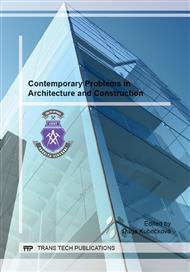p.457
p.463
p.472
p.478
p.484
p.491
p.495
p.501
p.507
Analysis of Quasi-Geoid Model Created for Territory of the Republic of Armenia
Abstract:
Abstract: National Geodesic Network of WGS-84 system was founded in the territory of the Republic of Armenia from 2002 to 2007, which includes zero, first, and second class 1115 stations and there were other 229 State Geodesic Triangular Network stations. The observation at these stations has been done by GPS system. Each of the above mentioned stations covers on the average 27 square kilometers of the territory of Armenia. The data obtained during GPS observations have become the foundation for creating local quasi-geoid models and obtaining differences of heights (geoid wave value) of normal and WGS-84 ellipsoid surfaces. On the basis of gravimetric data a quasi-geoid model has been computed and developed. To creat the model coordinates of four geodetic satations encompassing the area of the Republic of Armenia have been used. To get the digital model of the selected area was diveded into five-minute sections by latitude and longitude and then coordinates of geodetic points have been taken. The above mentioned points were recalculated from the local system to WGS-84 system. The creation of the local elippsoid quasi-model is conditioned by the difference of 3D coordinates difference of three-dimensional of each point’s position. The values of the geoid wave vary within the range of 17.4547 meters, the average difference being almost in the centre of the area and is 21.2522 meters. To obtain the digital model of the quasi-geoid at the given local ellipsoid at each 100m a square matrix (of the network) was made by coordinates of recomputed points.
Info:
Periodical:
Pages:
484-487
Citation:
Online since:
October 2014
Authors:
Keywords:
Price:
Сopyright:
© 2014 Trans Tech Publications Ltd. All Rights Reserved
Share:
Citation:


